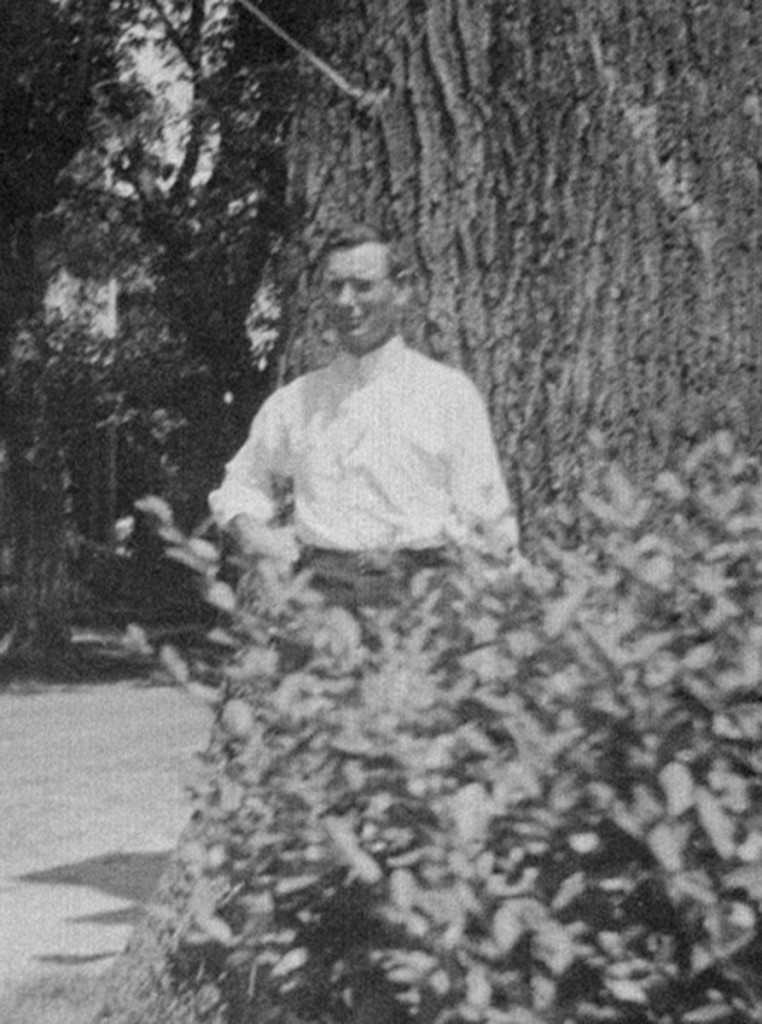In my last post, I identified the house that David A. Conner (D. A. C.) lived in up until his death, on Federal Street and Manship Street. This is just the tip of an iceberg of many dozens of photographs and papers that were held by D. A. C. and his descendants, and were brought to my attention by Fred Pepper (yes, he of the greenhouses) – Conner’s great-grandson. I am extremely fortunate, as a researcher, to have graciously been given permission by Mr. Pepper to access and use the considerable quantity of documents in his possession to tell the story of a man who chronicled Milton life for nearly thirty years. Thank you, Fred!

For this posting, I will first share a photograph of D. A. C. taken, in all likelihood, by his daughter Laura Conner Pepper, Fred’s grandmother. It shows Conner posing in front of a very large poplar tree near the corner of Federal and Poplar Streets, next to his own home. This is the only image of Conner I have ever come across, and I am delighted to share it with my readers.
The second item that I wish to share is a narrative written by D. A. C. around 1889 or 1890 which he intended to submit for publication but never did. It is 7,000 words long – the equivalent of five weeks’ worth of his Milton News letters, or a half page of the Milford Chronicle. Mr. Pepper found the manuscript in the attic with many other family documents. The manuscript itself is difficult to read, but I have transcribed the text and created the page The Little Maid of Hankin’s Wood with the complete story. It is long, but worth reading if you are interested in a particular series of events in Delaware’s Civil War history: the call-up of several thousand “Emergency Men” for a thirty-day enlistment in July of 1864, for the purpose of defending Washington, D. C. from threatening Confederate forces. D. A. C. was one of these “Emergency Men.” But as the title hints, this is not a Civil War epic of harrowing battles and heart-wrenching epistles like Sullivan Ballou’s letter to his wife in Episode 1 of Ken Burns’ Civil War documentary. D. A. C. first met his wife, Mary E. King, when his company was stationed near a place called Hankin’s Woods, in Baltimore County, MD. The story of the first meeting, and the courtship that followed, is sentimental and flowery by modern standards, but it is a genuine declaration of love, charming in its quaintness. Furthermore, since we have no photographs of Mary, his physical description of her – auburn hair, hazel eyes, lithe form – is the only clue as to what she looked like. When I re-read some of what Conner wrote about her after her death, the writing becomes all the more poignant.
In the next few postings, I will publish more of D. A. C.’s writings and many family photographs that bring to life the family he wrote of in virtually every Milton News letter.
